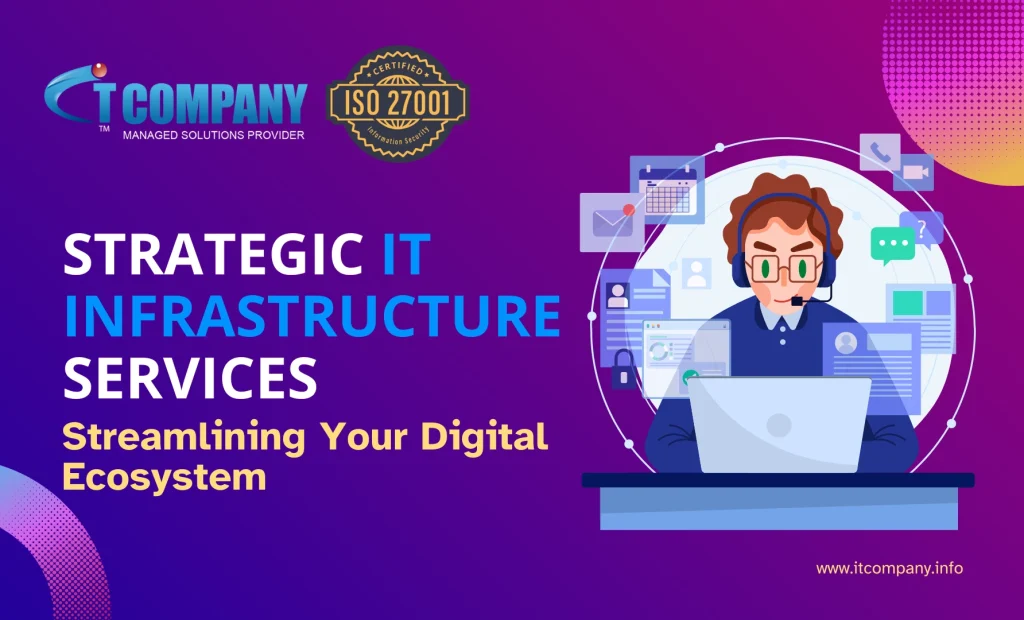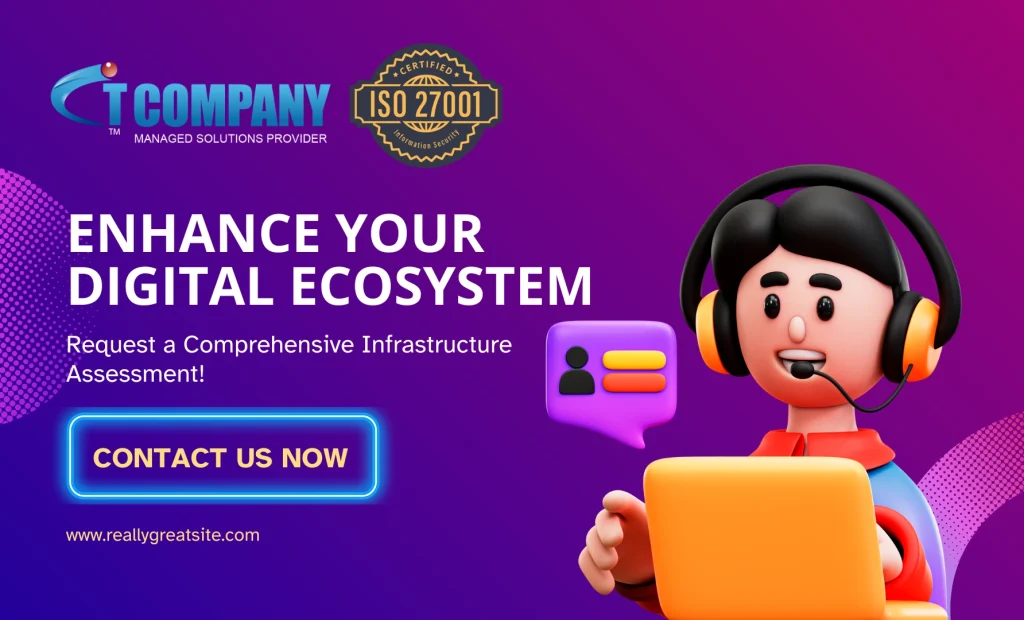
IT Infrastructure services play a critical role in shaping digital ecosystems by providing the technological foundation needed for an IT company to support and grow its operations.
These services not only enhance efficiency, performance and scalability, but strategically ensures improved performance and aligning with business goals to drive sustainable growth and long-term success.
Table of Contents
ToggleWhy IT Infrastructure Service is Important for Your Business?
In modern world online digital presence is the key essence of any business success and failure and IT infrastructure is critically the backbone of any enterprise. Let’s dive deeper into the importance of IT services in infrastructure.
1. Strategic Planning
Understanding Business Objectives
Understanding business objectives is critical for aligning IT infrastructure with organizational goals. By ensuring the IT framework supports key business functions, companies can track progress using key performance indicators (KPIs).
Infrastructure Assessment
Infrastructure assessment helps in evaluation, strengthening it infrastructure, opportunities to grow and threats identification (SWOT analysis). This approach is suitable for both in-house and out-source IT support equally.
3. Design and Architecture
infrastructure Design
It entails developing a scalable and adaptable IT architecture that is very useful for evolving business requirements as it ensures system engineering to manage increased workload efficiently and integrate seamlessly with existing technologies and processes. Designing facilitates future innovation without interrupting ongoing operations. Hence it helps in optimized performance and business sustainability continuity.
Technology Selection
Technology selection involves evaluating and choosing appropriate hardware, software, and network solutions based on criteria such as performance, compatibility, and scalability.
Assessment of emerging technologies should also include a thorough evaluation of advantages, cost-effectiveness, and its potential impact on business. It is important to conduct comprehensive research, cost-benefit analysis, and pilot testing to confirm that new technologies synch with setup and enhance competitive positioning in digital ecosystem.
4. Implementation and Deployment
Project Management
Create a detailed project plan and timeline to manage resources effectively and coordinate team in a timely manner. This entails timely completion of task and add value addition to the scope of work.
Deployment Process
Deployment process begins with the installation and configuration of infrastructure components such as integrating IT software’s with business applications and data systems. The step is very important as it helps in optimal and best functionality of setup within the existing environment.
Change Management
For better performance and maximum output, it is very important to train staff and facilitate smooth adoption of new systems that can have great impact on day-to-day operations.
5. Optimization and Performance Management
Performance Monitoring
It involves setting up monitoring tools and defining metrics to track system performance. Analyzing performance data helps identify areas for improvement and ensure optimal operation.
Continuous Optimization
includes implementing best practices to enhance performance. It also involves adapting to changing business needs and technological advancements, ensuring that the system remains effective and up to date.
6. Security and Compliance
Security Measures
It involves implementing robust security protocols and technologies to protect data and ensure secure access. This includes deploying encryption, firewalls, and authentication systems to safeguard information and prevent unauthorized access.
Compliance and Regulations
It requires adherence to industry standards and regulatory requirements to maintain security and privacy. Regular audits and assessments are essential to ensure ongoing compliance and to identify and address potential vulnerabilities.
7. Support and Maintenance
Ongoing Support
Ongoing support provides technical support and troubleshooting issues that arise during day-to-day basis. Regular maintenance and updates make the system secure, efficient and up to date.
Disaster Recovery and Business Continuity
Plan to recover from disaster and fixing and troubleshooting during potential disruptions are key elements in IT infrastructure development and services. That is the reason why it is very important to maintain operations and minimize impact during unforeseen events.
8. Review and Future Planning
Performance Review
Evaluate the success of the implemented infrastructure by assessing its effectiveness and efficiency. Gather feedback, inform stakeholders, and highlight areas for improvement.
Future Enhancements
Make a plan for future upgrades and expansions to accommodate growth and evolving needs as the business grows. Staying ahead of technological trends and innovations ensures infrastructure competitiveness and leverages the latest advancements.
9. Conclusion
IT infrastructure services are crucial for building a solid foundation as it enhances operational efficiency. Strategic planning involves aligning IT infrastructure with business goals, conducting in depth assessment and leveraging SWOT analysis for maximum capabilities.

Designing and architecture ensures smooth workloads and evaluation helps in assessing emerging issues and meet current and future needs
Getting assistance in IT infrastructure service IT Company with managed IT services presents you a perfect model with expert assistance.